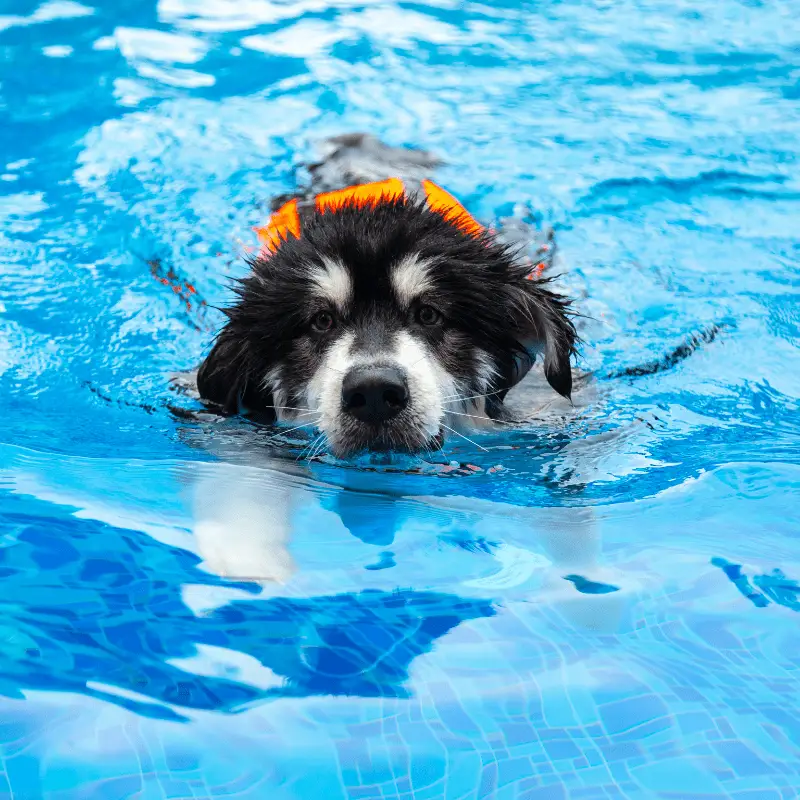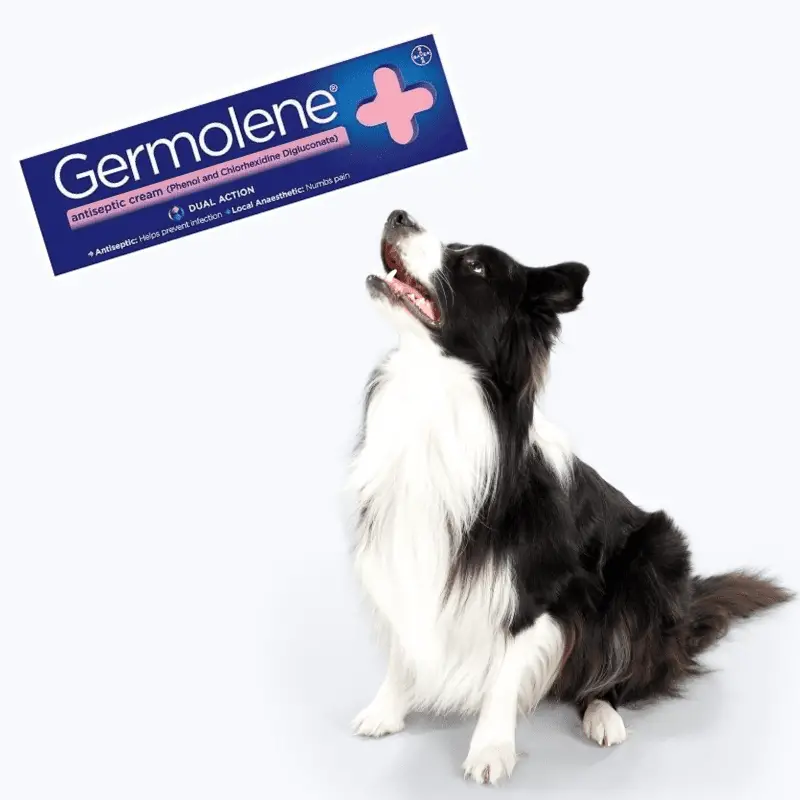Dogs are generally born with solid instincts from birth. For example, you don’t need to teach your dog about factors like digging, barking, and running after cats and other small animals. Swimming is another skill that most people think dogs possess naturally. Let’s find out if all dogs can swim? Does the type of breed affect their swimming abilities?
Not all dogs can swim naturally. Some dogs are better at swimming than others because of their physical appearance and instincts. However, most dogs can learn how to do the doggy paddle to stay afloat. In some cases, a dog may need a life jacket to help them stay afloat.
Whether your dog will enjoy diving into the water or treat it as an enemy can depend entirely on the breed and their personality. The more you know about your dog’s swimming ability due to your dog’s breed and physical features, the easier it will be for you to take necessary precautions. For example, if you love to go to the beach, you need to ensure that your dog is comfortable in and around the water. It is also essential for you to take the necessary steps if you have a swimming pool in your garden or visit someone else’s house.
All Dogs Are Different!
- Some dogs love to stay in the water and can swim effortlessly for a long time.
- Some dog breeds are not that good at swimming at the beginning. However, you can teach these dogs to swim and aid them with a life vest.
- Then there are the dogs that hate the water and stay clear of all kinds of aqueous environments.
Natural Born Strong Swimmers
Natural-born swimmers are dogs that were once used for water-related jobs. Dogs like Nova Scotia Duck Tolling Retriever or Labrador Retrievers fall into this category.
These dogs were traditionally bred to retrieve waterfowl from lakes during hunting expeditions. So swimming comes second nature to these breeds.
Some dog breeds even have water in their names, thanks to their swimming abilities, such as the Portuguese water dogs.
What makes a dog a good swimmer?
Having a suitable physical appearance helps a dog breed to swim better, such as a long snout, a well-proportioned body such as a non-bulky chest, not too much muscle, not being overweight, webbed feet and a light semi-waterproof coat. All these physical appearances will help a dog be confident in the water, thus making them great swimmers.
Strong Dog Breed Swimmers
Several dog breeds have a love-hate relationship with water. However, nearly all of the best dog swimmers are bred to assist us within the water in some way or another. These natural swimmer dogs have the physical structure that allows them to swim with ease.
Labrador Retriever
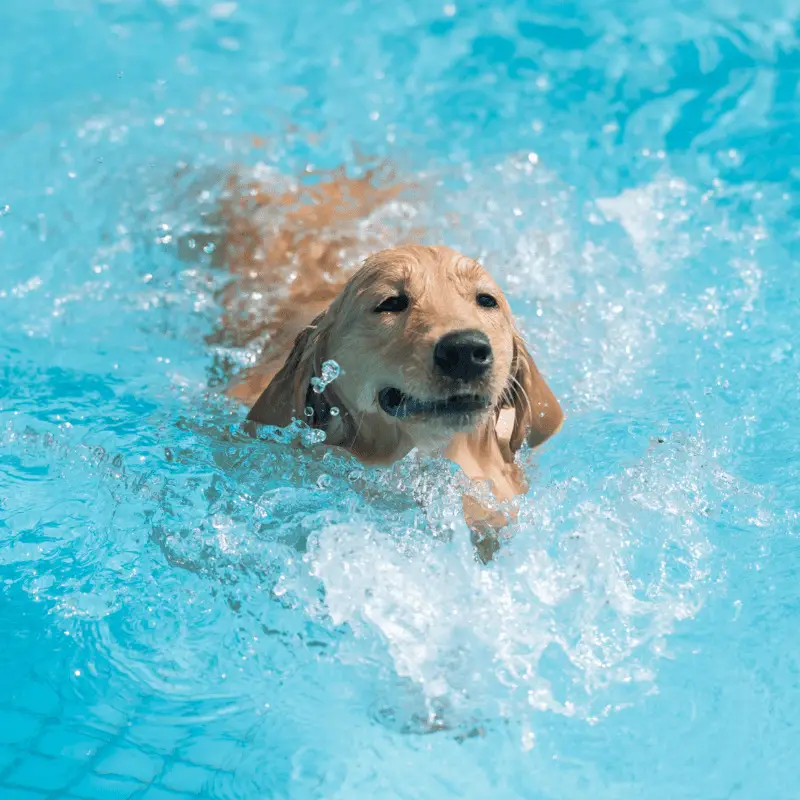
Labrador Retrievers are undoubtedly the most popular dog breed when it comes to family dogs. However, these dogs were initially bred for retrieving waterfowl from water bodies during hunting expeditions. Thanks to this heritage, these dogs are excellent swimmers that love playing in the water.
Chesapeake Bay Retriever

Chesapeake Bay Retrievers are gun dogs that were traditionally bred for water retrieving. These dogs look almost identical to the Labrador Retrievers but have a Wavy coats. These dogs are excellent swimmers and Hunters.
Portuguese Water Dog
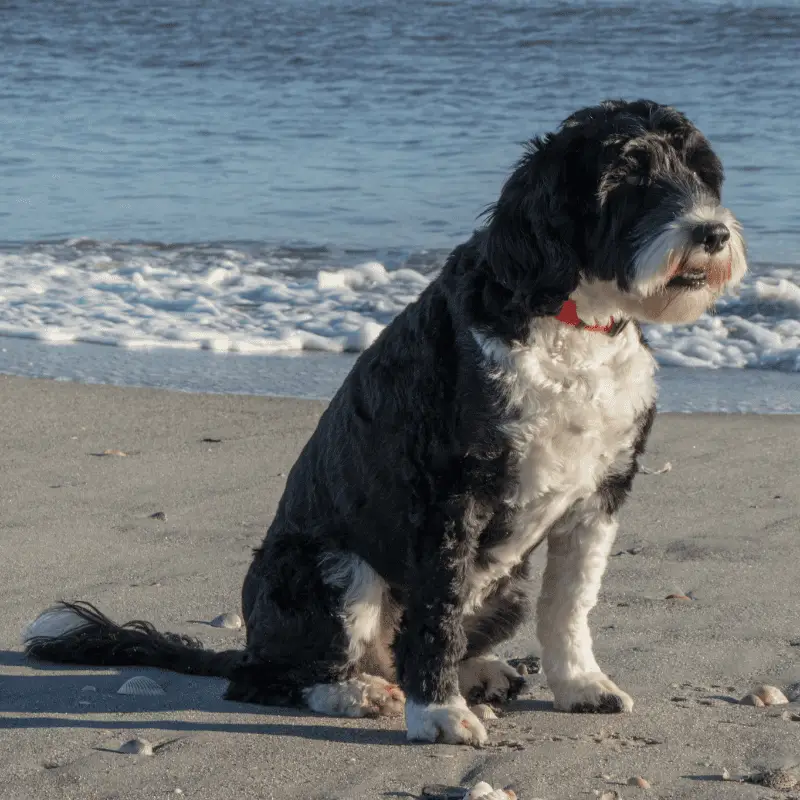
Their strong affinity to the water is why this word has been included in their official name. You do not have to ask them twice to jump into the water. These dogs were traditionally bred to help the Portuguese fishers in their jobs. So it is natural for you to find these dogs travelling on boats without any problem. These dogs are best for water-loving families as they can spend days on a ship.
Poodle
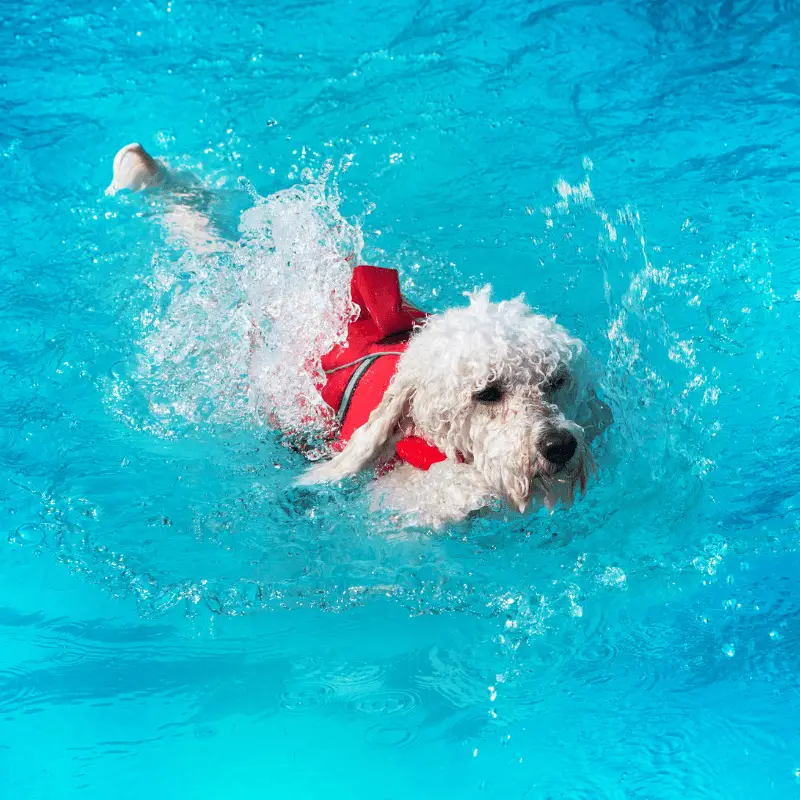
The posh look of these dogs makes it hard to imagine for anyone about their wild nature. But the truth is these dogs are water dogs in their heart. Their name is derived from the German word poodle, which means splash in the water. These dogs were bred to jump into the water for retrieving games. The colour coat of these dogs keeps them warm even whilst they splash around in ice-cold water.
The traditional grooming of a poodle leaving fur around the feet, head, knees, and tail was to help keep certain body parts warm and not groomed like this to look pretty.
Nova Scotia Duck Tolling Retriever

One of Canada’s most popular dog breeds, these water-loving dogs possess a unique tolling skill. Also known as tollers, these dogs can move the ducks within the hunting range. They use various skills to get the ducks to the right spot. The Nova Scotia duck-tolling Retriever will retrieve the game once the waterfowl is in range and shot.
Newfoundland
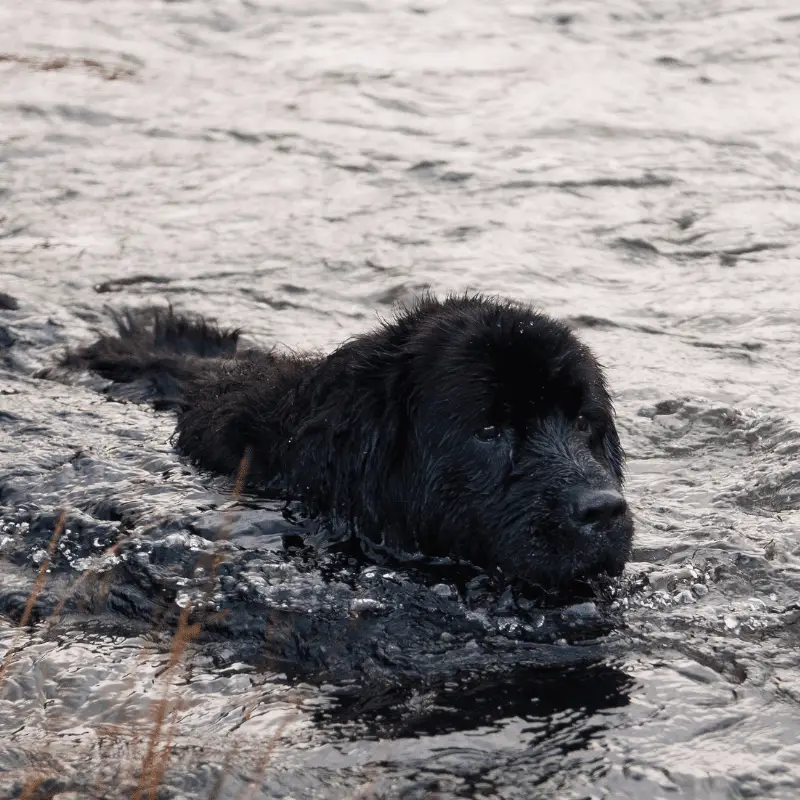
These dogs can be called water-loving giants. These dogs were brought to Canada by the European anglers who started breeding these dogs to help them fish. Traditionally breeders also produced these dogs for water rescue. These dogs can quickly plough through the water to help a person in distress.
Schipperke
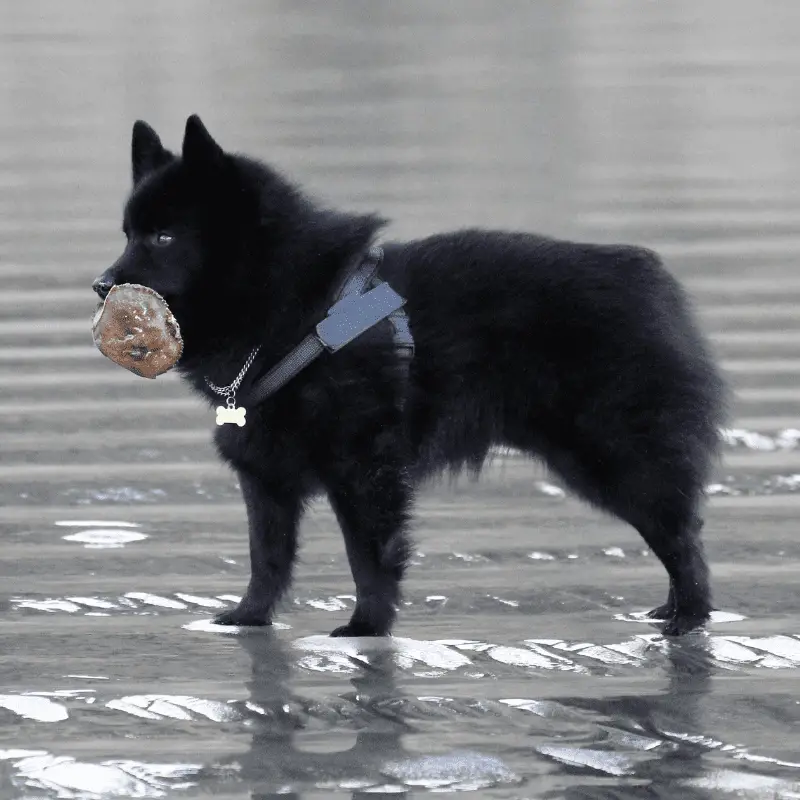
These small dogs originated in Belgium. Traditionally, these dogs were bred to play the role of rodent exterminators in the ships and dockyards. In Flemish, the term schipperke means little captain. Even though these dogs are tiny, they are agile, energetic, and fearless. They love to swim and play in the water while its thick coat keeps them warm even when they splash around in the water.
Physical Features Makes It Difficult To Swim
Dog breeds that cannot swim have similar physical features that let them down in the water.
- Dogs with extremely short snouts or flat faces cannot swim that well. The reason is that it is challenging for them to keep their nose out of the water. That is what creates a drowning risk for them.
- Dogs with barrel-shaped bodies also find it challenging to stay afloat for a long time.
- Dogs that have long bodies and short legs find it difficult to swim.
- Dog breeds with thick, long coats often find it difficult to swim.
- Dogs that are overweight will struggle to swim.
Weak Dog Breed Swimmers
Bulldog
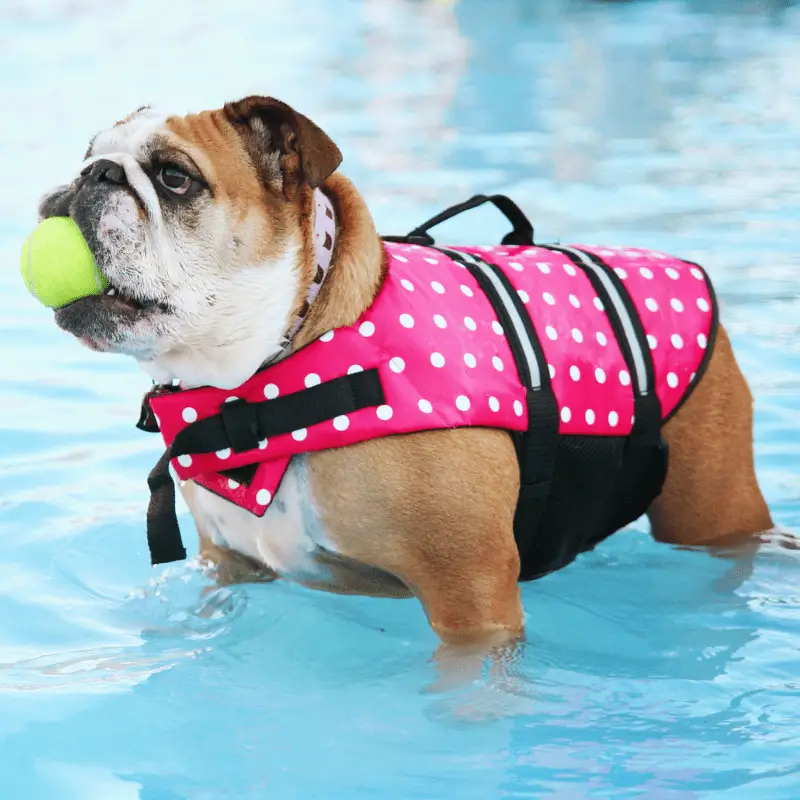
When it comes to swimming, both the French and English bulldogs suffer from triple threats. The number one threat is that they are a brachycephalic breed. That means they have flat faces, making it hard to keep their noses out of water. The second and third problem is their short legs and barrel-shaped bodies.
Pug

Even though you can find your pug splashing around in the shallow water, they do not like to swim. The reason is the pug’s flat face. While swimming, it is tough for a pug to continue breathing without any problems. When dogs have a flat face structure, they have to keep their heads tilted right back to breathe normally. It makes their back dip too low, making it challenging to swim normally and stay afloat.
Bull Terrier
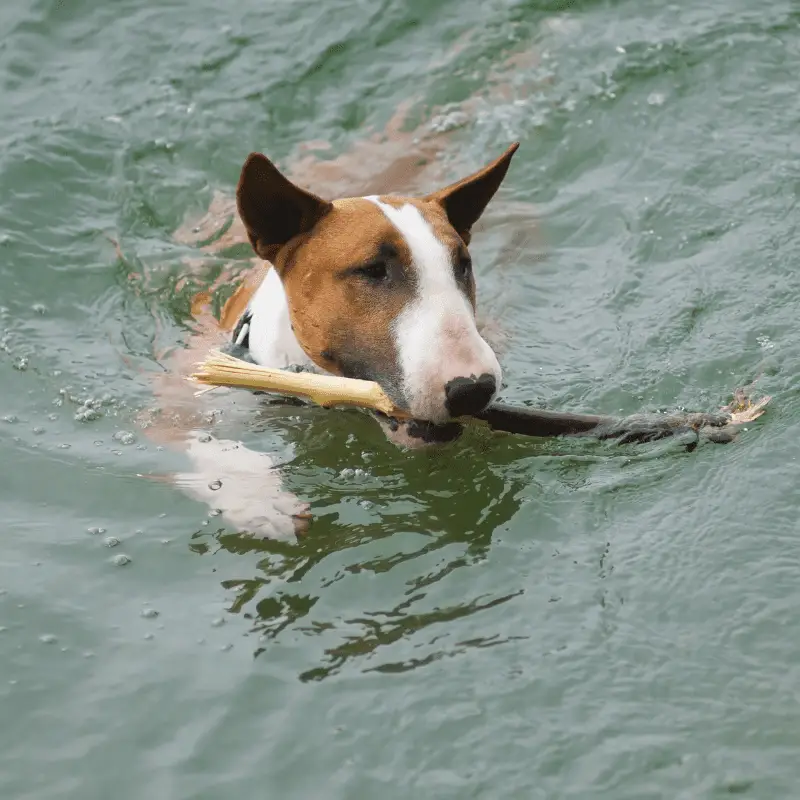
Even though these dogs belong to the water-friendly terrier group, their unique body features make it challenging to stay afloat. Their deep chest and short legs make it extremely difficult for them to paddle for a long time. Their close cousins, Staffordshire bull terriers, are also not great swimmers. Even though these dogs are much larger than the Bull terriers, their heavy muscled and oversized head makes it difficult for them to tread on water.
Basset Hound
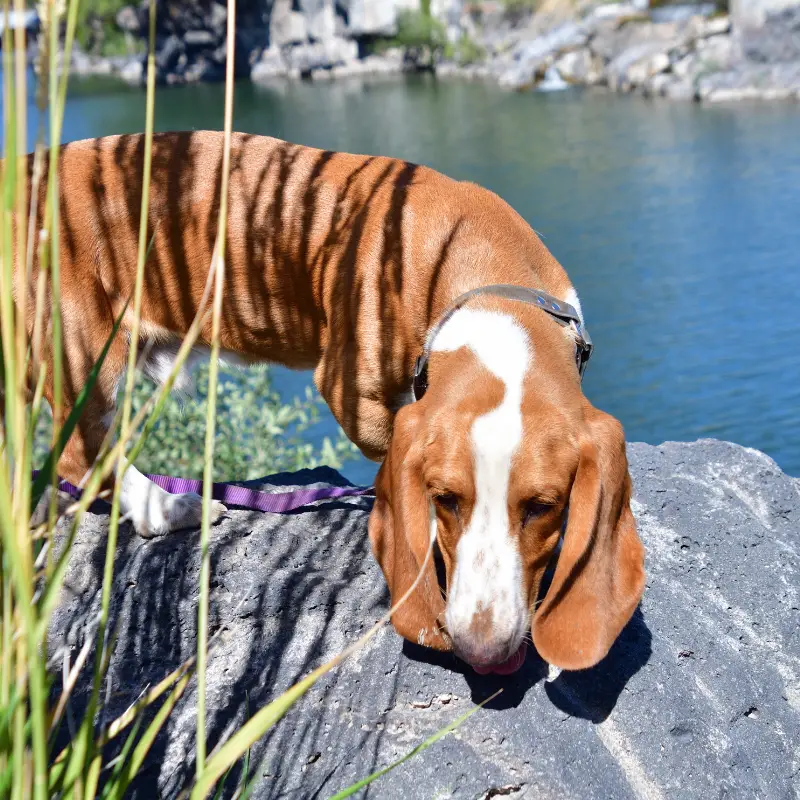
The short legs and large head makes it extremely difficult for the Basset hounds to stay afloat in water. Other than that, the large floppy ears of these dogs hinder them from getting in the water. They tend to suffer from ear infections if even the slightest bit of water gets inside their ear canals.
Boxer
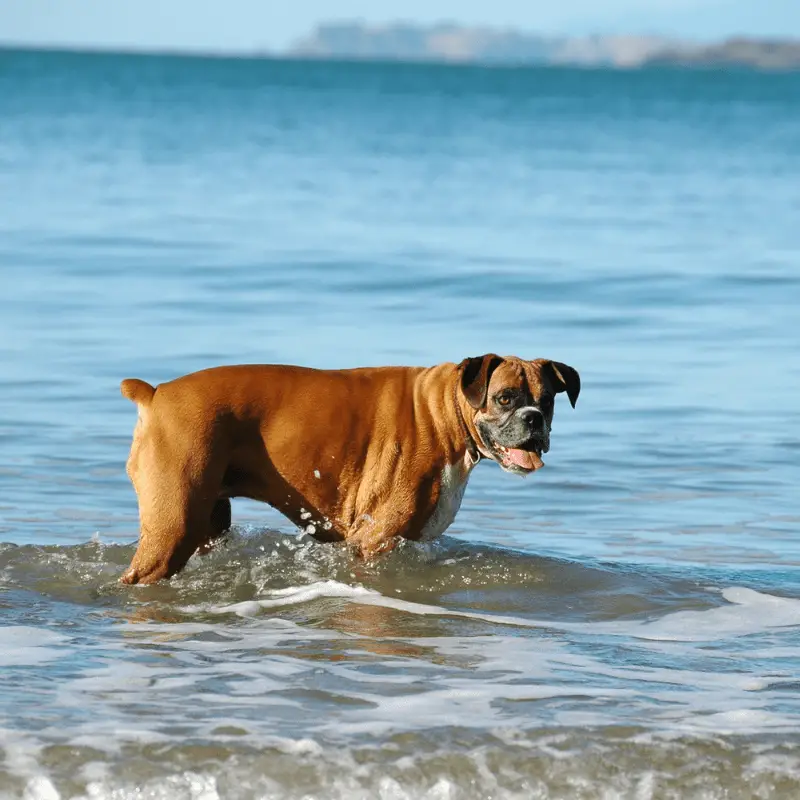
These dog breeds’ athletic and large build often gives an impression of a natural-born swimmer. However, the flat face of these dogs makes swimming difficult. These dogs can get tired quickly while paddling, which creates a risk of drowning if they stay in the water for too long. Just like the other brachycephalic breeds, these dogs also struggled to breathe while swimming.
Corgi
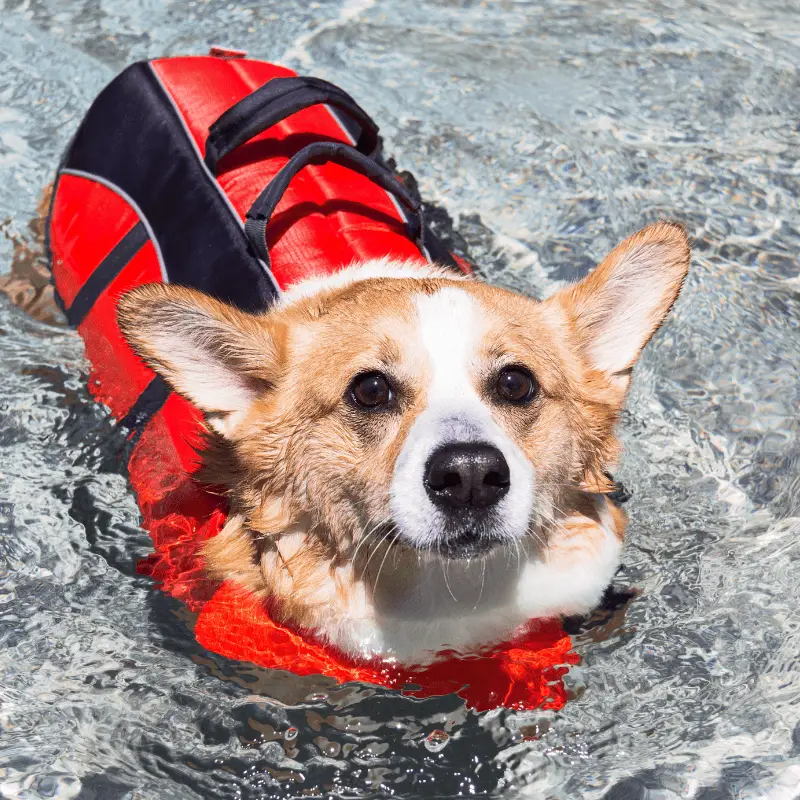
Even though these dogs have a strong affinity with water, neither the Pembroke Welsh corgi nor the Cardigan Welsh corgi is a good swimmer. Their barrel-shaped chest, long body, and very short legs create a physical feature that makes it difficult for them to swim. So it would be best if you let your corgi enjoy in shallow water.
Dachshund
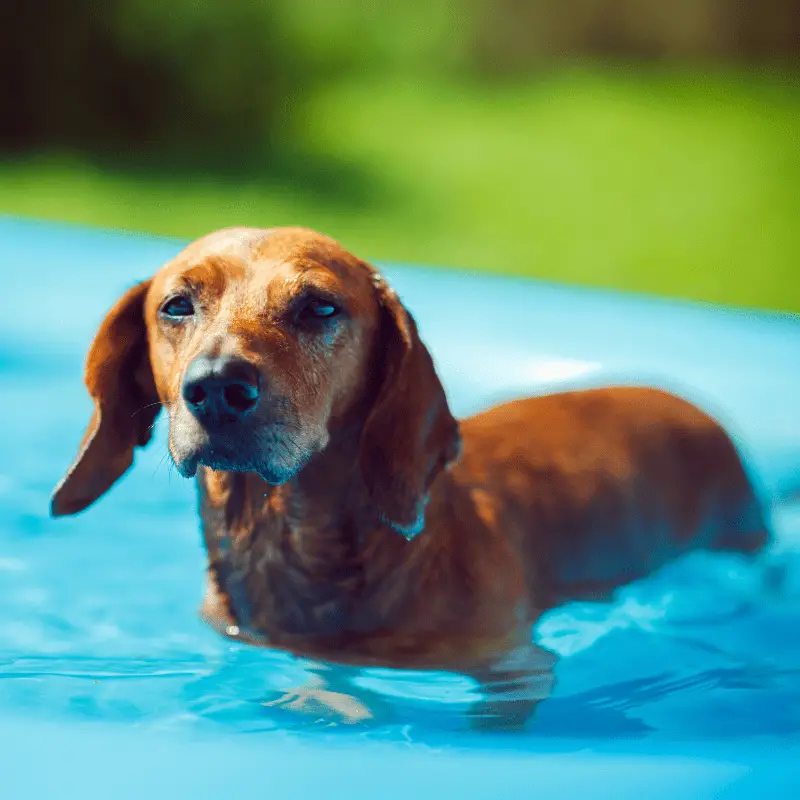
Like the corgis, the long body and short legs of the Dachshunds make it extremely difficult to swim. Even swimming in the shallow water can tire these dogs out of drowning. It would be best always to watch these dogs when they are around any water.
Shih Tzu
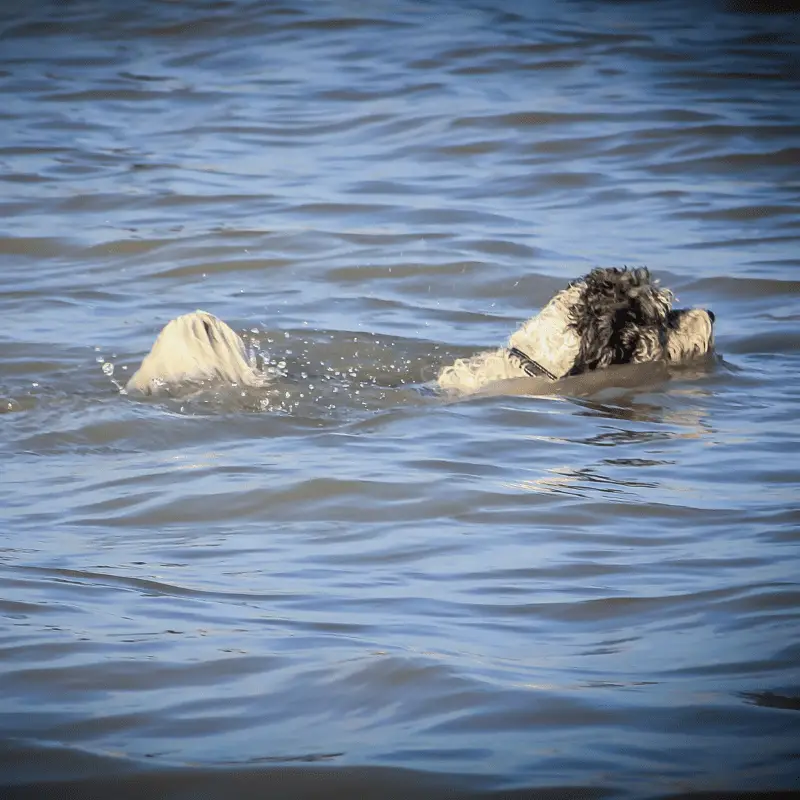
Like any smaller dog breed, the Shih Tzus suffer from several disadvantages in swimming. The tiny legs and short muzzle make it extremely difficult for these dogs to keep their mouth and nose out of the water. Along with that, their long fur coat weighs them down while swimming. Their long jacket can also cover their nose and mouth, making it even more difficult for them to breathe.
Water Safety Advice For Dog Owners
If you are a parent of any dog breed that cannot swim, you should take the necessary steps to keep them safe around water. Here is some advice that can help you achieve that.
- Invest in good-quality doggie life jackets. Make sure to put it on your dog when you visit anywhere with water.
- Always choose a life jacket that has a handle. It would help you to drag your dog out of the water if necessary and quickly. The fit of the jacket should be loose enough that the dogs do not feel uncomfortable. However, it should be tight enough so that your dog cannot slide out of it.
- If your dog is a weak swimmer, always stick to the shallow water when you take your dog to lakes or the beach. If your dog enjoys splashing in the water, you should allow them to do so. However, do not force your dog to get into the water if they are reluctant about it.
- Put a fence around your swimming pool to keep your dog out.
- If you have a garden pool, you can fit a motion detection camera over the swimming pool that will detect if your dog has fallen in by accident.
- Teaching your dog how to swim is always a good idea, and getting them used to the water in small bursts.
- Get professional help to teach your dog how to swim.
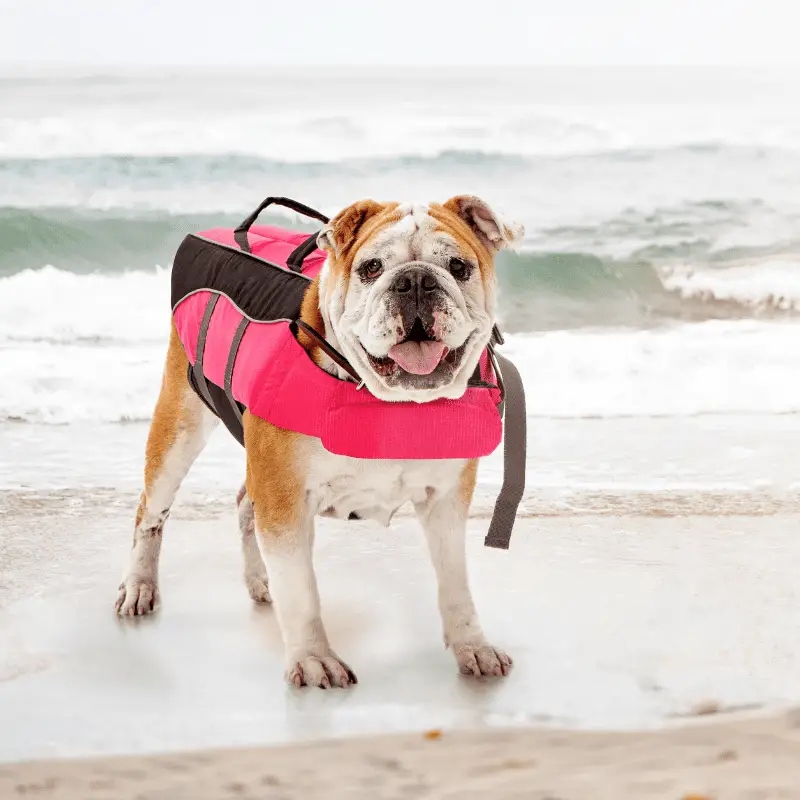
Wearing a life jacket will help a dog to stay afloat
Helping A Dog To Like Water
- Understand that not every dog is a great swimmer, even if their ancestors were bred to assist in water. Some dogs are naturally anxious about water. However, start slowly introducing your dog to the water.
- Get a small paddling pool. Make it fun for your dog. When your dog gets into the paddling pool, even if it’s just one paw, reward your dog with a treat or give happy voice praise.
- The younger you start, the better.
- Never push or force a dog into the water. By slowly calming a dog’s nerves, they will come to love and tolerate the water.
- Don’t forget to wear a life jacket when they go into more extensive and deeper swimming areas. Make it fun! Let them wear it around the house or out on a walk to get them used to the life jacket.
- If your dog has any confident swimming dog friends, get them together during the training. They will pick up on the other dog’s behaviour and actions in the water.
Remember always supervise and be ready to grab them out at any point. Sometimes, your dog may never get used to the water and will always hate it, in this case. Accepting this can be the best answer for you and your dog.

